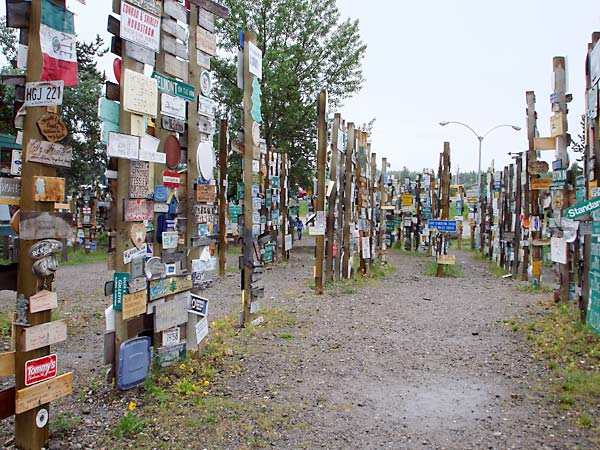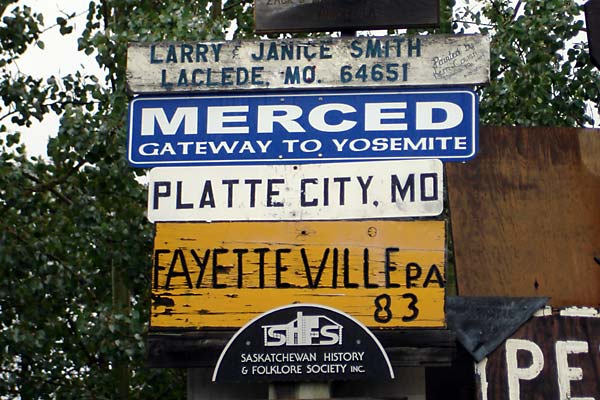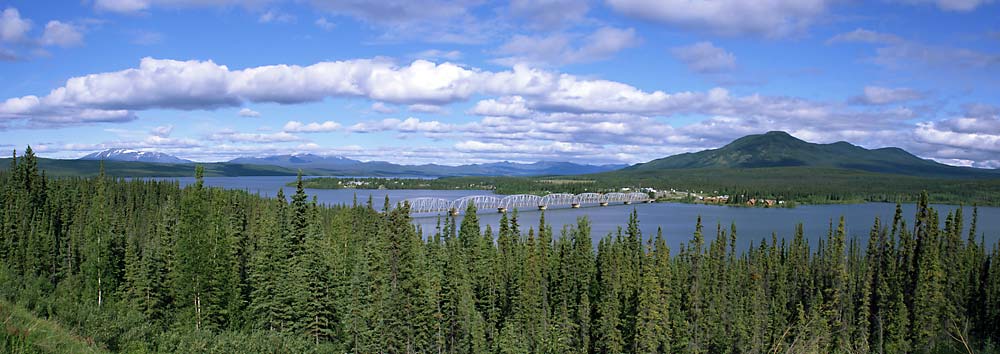View of Teslin Lake and the village of Teslin.
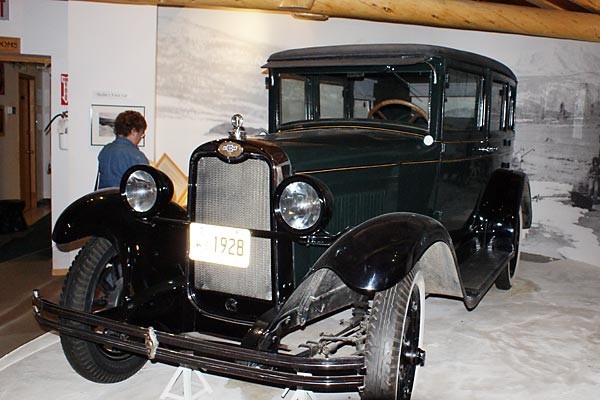
In Teslin we stopped at the George Johnston museum, which was very
interesting and well worth the stop. George Johnston was a Tlingit who
lived from 1893 to 1972. He was an avid photographer who took a lot of
photos of Tlingit life and culture from 1910 to 1940. In 1928, he
bought a Chevrolet (seen here) and had it brought from Whitehorse
to Teslin by boat; it was the first automobile in Teslin. The fact that
there were no roads in Teslin didn't stop him; he built a 3 mile road
so he could drive the car in the summer. His road is now part of the Alaska Highway. Nature provided a 70 mile road
for him in winter by freezing Teslin lake. George's primary source of
income was from hunting and trapping. In winter he painted the car
white to camouflage it, so he could use it for hunting on the frozen
lake.
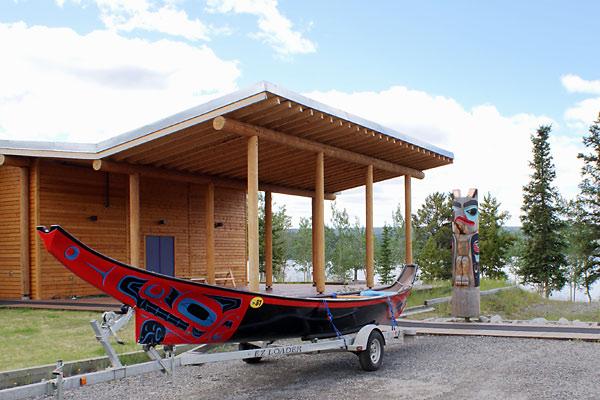
Another stop in Teslin was the Tlingit Heritage Centre, which focused
more on the culture of the coastal Tlinkits. The museum was not as
interesting as the George Johnston museum, but they did have a couple
of Tlingit canoes. This one, although painted in the traditional style,
is modern; it is made of fiberglas.
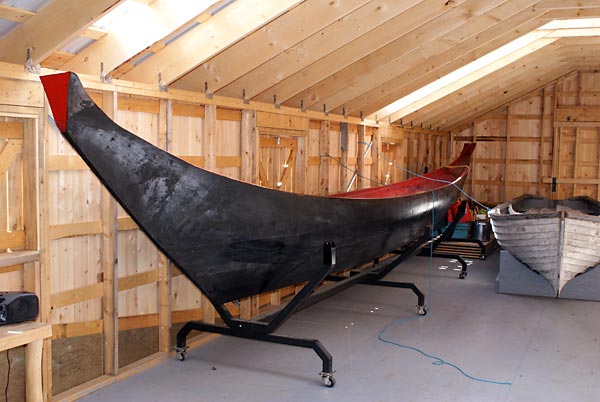
They also had a dugout canoe, which are more traditional. The dugouts
are made from a single cedar log; cedar trees of this size are
available in the coastal region, but not here. This one is in the
process of being painted.
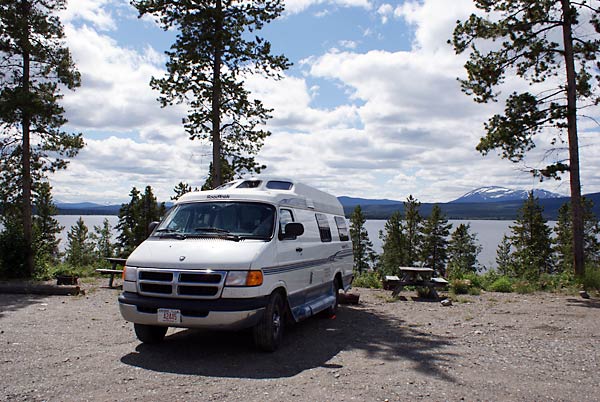
We camped that night at Mukluk Annie's restaurant, which is about five
miles north of Teslin. Since we had camped in Teslin the previous
night, we traveled all of about 5 miles that day. Mukluk Annie provides
free RV parking with a gorgeous view of Teslin Lake. Muklak Annie's
restaurant specializes in salmon cooked on a grill. The food was
very good, as well as being reasonably priced.
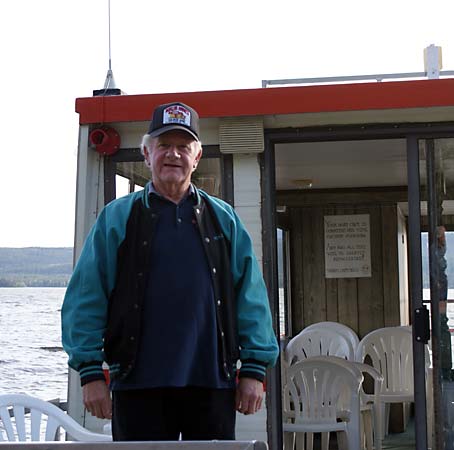
Mukluk Annie's husband Chuck, seen here, gives a free houseboat ride to
salmon bake customers. Despite the Yukon name, Annie and Chuck are
originally from Minnesota, but have been here since 1967.
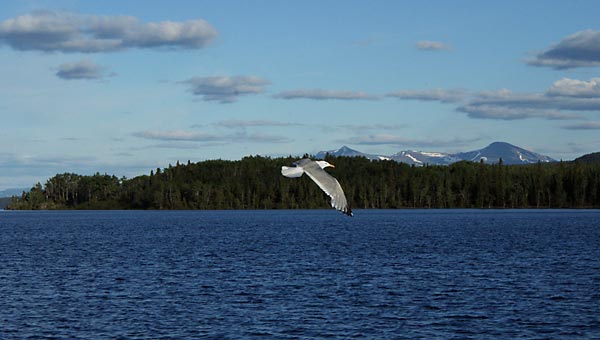
As we motored out on to the lake, many gulls started following the
boat. After about half an hour we found out why. Chuck stopped the boat
and passed out bread to the passengers to feed the gulls with. It was
fun tossing the bread into the air and watching the gulls catch it on
the fly. Boy, did they squawk when Chuck restarted the engine and
started back home; their snack time had ended. Chuck follows this
routine with every trip, so the gulls are expecting to be fed.
